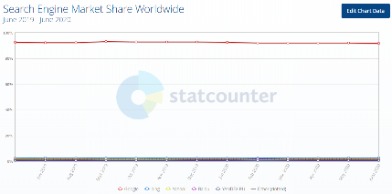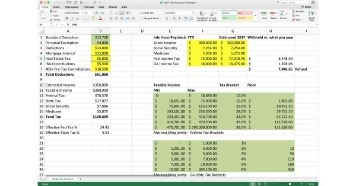
Competition from Japan and other Southeast Asian countries threatened manufacturing industries in the United States and Europe. There was a sense of urgency and improving manufacturing was at the core of the threat (Hayes et al., 1988). The central argument was the need to excel in different dimensions of manufacturing at the same time, rather than thinking about tradeoffs. Customers wanted products with more functionality and adapted to their preferences.
Reporting manufacturing performance measures to workers: an empirical study
With every large financial outlay, you should first analyse the feasibility given your current situation. You should also determine the returns the investment will bring in the long-term. There are good and bad times to make an investment, which should be apparent if you’re accounting accurately.
Agency research in management accounting: a survey
This can produce a higher degree of accuracy, but many manufacturers are unlikely to have items that have a unique identification. This is better for high-value items that need differentiation, rather than interchangeable items. Many ocean city md wine bar and bistro restaurant liquid assets manufacturers use the ‘first-in, first-out (FIFO)’ method, where products are sold in the order they are added to inventory. A popular way of costing inventory; this could work for businesses that have products with a shelf life.

Manufacturing Business Defined
Professional accounting services can completely transform the manufacturing process and save you money on production costs while increasing profit. Further, for smaller manufacturers that aren’t equipped to have full-time accounting staff in-house, partnering with the right accounting service will make a world of difference. One of the most critical parts of identifying and controlling costs in manufacturing is inventory management. At the end of your accounting periods, inventory valuation allows you to establish the cost of making the goods you sell versus how much profit you’re making.
- Features found in accounting software such as inventory management can help you optimise the way you use inventory, such as providing alerts when your stock needs replenishing.
- When using lean accounting, traditional costing methods are replaced by value-based pricing and lean-focused performance measurements.
- Deploying a modern manufacturing planning engine can also ensure sufficient inventory is available to meet the demands of the business but that excess inventory is not causing undue strain on the business.
- Fixed costs in manufacturing are not related to production volumes and must be paid whether or not production is active.
Which Types of Costs Go Into Cost Accounting?
ABC is a very accurate costing methodology that helps to factor indirect costs into unit pricing. It can be more difficult to implement than standard or job costing, however, as a more detailed overview is required over the manufacturing process. This costing method is similar to job costing, however, it calculates item costs by adding together the direct costs and overheads per processing step of a product’s lifecycle, rather than per individual group buying site coupons item or job. This makes it a favorable costing method for process manufacturers and other companies that otherwise produce large numbers of identical units. From inventory management to payroll and accounts payable, accounting software helps manage the financial aspects of a business. Inventory valuation, direct labor and manufacturing overhead costs are just part of the recipe that is cost accounting in the manufacturing industry.
Cost accounting aims to report, analyze, and lead to the improvement of internal cost controls and efficiency. Even though companies cannot use cost-accounting figures in their financial statements or for tax purposes, they are crucial for internal controls. For example, cost accountants using ABC might pass out a survey to production-line employees who will then account for the amount of time they spend on different tasks. The costs of these specific activities are only assigned to the goods or services that used the activity.
This provides valuable feedback on your manufacturing and inventory processes. In the world of making things, keeping an eye on how much everything costs is key. Just like a chef needs to know the price of ingredients, including the cost of raw materials, to make a delicious and profitable meal, manufacturing companies need to be smart about their spending. Cost accounting is helpful because it can identify where a company is spending its money, how much it earns, and where money is being lost.
To get off on the right foot with data hygiene, invest in good systems and follow the correct steps to implement them. Automation and efficient implementation will reduce the number of human errors and the likelihood of other issues arising in the future. Your building lease is most likely a fixed cost because, regardless of what you do inside the building, the lease usually stays the same. Learn more about Rootstock Financials by visiting the product page and watching a webinette about Rootstock financials. This list covers some of the most accessible tax breaks and tax deductions for your business. With robust reporting features, you gain valuable insights into your operations and identify areas for improvement.
In manufacturing, fixed costs remain consistent no matter how many units you produce. For example, that might include rent for your factory or interest payments on a business loan. Also known as factory overhead, manufacturing overhead refers to the cost of maintaining and operating your production facilities. Overhead costs include expenses like factory rent, utilities, and administrative costs. Variance analysis, which involves comparing your standard costs to your actual expenses, is a great way to reveal areas of overspending, improve production efficiency, and increase cash flow.
Financial decision-making is based on the impact on the company’s total value stream profitability. Value streams are the profit centers of a company, which is any branch or division that directly adds to its bottom-line profitability. Manufacturing businesses have to account for their raw materials and processing costs, but they also have to work out the value of the finished items they create. This article lists the various methods of accounting and costing methods for manufacturing business owners to help you have a detailed understanding of all the concepts and principles involved. In production management, manufacturing cost accounting seeks to determine the cost of goods sold to better understand revenue and profitability at both the business level and the individual product level. This knowledge enables you to plan better budgets and spot production inefficiencies.
This method is by far the most common method used in manufacturing businesses to accurately estimate their costs. In standard costing, businesses assign standard costs for raw materials and labor when factoring them into inventory and production expenses. Advanced manufacturing accounting software is a must-have for modern manufacturers and the manufacturing accounting teams responsible for tracking business financials. Manufacturers demand powerful, intuitive financial reporting with customizable dashboards to monitor costs, profitability, cash flow, and financial health in real-time. Rootstock Financials is an ideal solution for manufacturing accounting, and so much more.
Process costing is beneficial for saving time as calculating costs need not to be completed for each individual unit. The downside is that the costs per unit can become inaccurate since rounding up costs per process can introduce discrepancies. Job costing is advantageous for returning close-to-exact cost values per finished project or finished good. It is sometimes difficult to manage, however, as individual tracking and allocation of costs can be time-consuming. In addition to per-part inventory costing, it is also important to track the total number of on-hand inventory units. The two common types that inventory can be arranged in light of this are the perpetual and the periodic inventory system.
Each customer might receive unique versions of products using different raw materials or options, so costs are determined for each job order. LIFO accounting for manufacturing inventory considers the most month end close process recent units entered into inventory as the next units sold. Think of a storage area that is filled from the front with the most recently manufactured units and shipments are also taken from the front.

Speak Your Mind